Tips for Growing Rosemary Plants in Pots
Written by Joy
Oct 28 2021

Rosemary plants are evergreen plants of the genus Rosemary. They are not only a precious natural spice plant, but also can be grown indoors as ornamental potted plants. Rosemary potted plants can not only enhance the taste of home, the fragrance of its branches and leaves also has the effects of relieving anxiety and fatigue and enhancing memory. So, since the benefits and effects of propagating rosemary are so extensive, how can rosemary grow rosemary in pot? This article introduces the potted growing rosemary method for everyone, hoping it can be helpful to everyone!
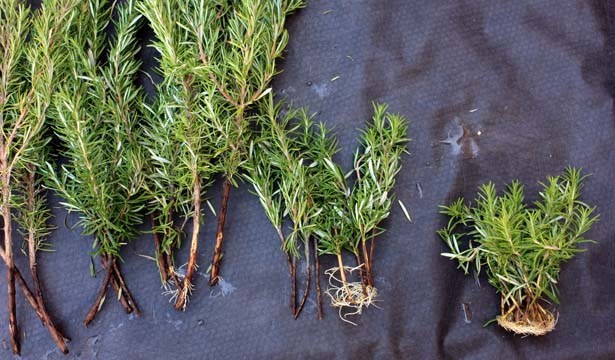
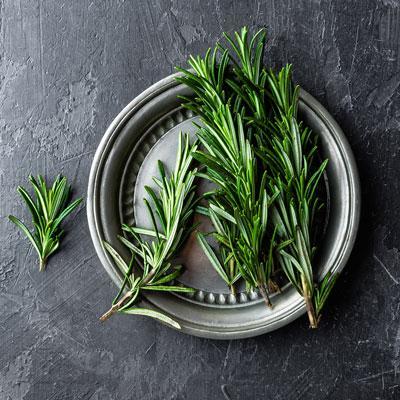 For the soil of the rosemary plant, ordinary garden soil is enough, and it is enough to fertilize two or three times a year, and there is no problem with decomposed organic fertilizer. You can put it in the soil at the edge of the flowerpot. You can also apply thin fertilizer to the rosemary plant frequently, and you don't need too much fertilizer at one time.
For the soil of the rosemary plant, ordinary garden soil is enough, and it is enough to fertilize two or three times a year, and there is no problem with decomposed organic fertilizer. You can put it in the soil at the edge of the flowerpot. You can also apply thin fertilizer to the rosemary plant frequently, and you don't need too much fertilizer at one time.
 After harvesting and cutting off the base leaves of of rosemary plants, you can put the propagating rosemary in a container with clean water for later use. In large-scale production, the amount of money usually consumed to take cuttings by oneself is more mental. An economical way is to buy rootless cuttings directly from a high-quality seedling dealer.
After harvesting and cutting off the base leaves of of rosemary plants, you can put the propagating rosemary in a container with clean water for later use. In large-scale production, the amount of money usually consumed to take cuttings by oneself is more mental. An economical way is to buy rootless cuttings directly from a high-quality seedling dealer.
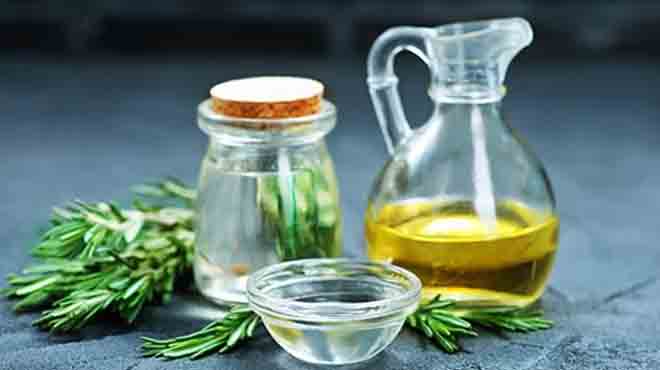 It is a good idea to transplant cuttings of of rosemary plants after they take root. Ordinary rosemary plants are transplanted into pots with a diameter of 10 cm. Depending on the variety and the season, you could grow rosemary plants in the 10 cm pot for 6 to 10 weeks. Experts recommend that the growing rosemary from cuttings be transplanted as early as possible to better grow the side branches, and it's a good choice not to exceed one-half of the length of the branches during pruning. Rosemary plants should use ordinary organic fertilizers with a liquid concentration of 125ppm. It's necessary to maintain the substrate pH at 5.8 to 6.2 for this period of time, if you are worried about pH changes. In the cold winter, you can use nitrate nitrogen instead of ammonium nitrogen. Daily use of chelated iron can help maintain the pH of the growing rosemary substrate.
It is a good idea to transplant cuttings of of rosemary plants after they take root. Ordinary rosemary plants are transplanted into pots with a diameter of 10 cm. Depending on the variety and the season, you could grow rosemary plants in the 10 cm pot for 6 to 10 weeks. Experts recommend that the growing rosemary from cuttings be transplanted as early as possible to better grow the side branches, and it's a good choice not to exceed one-half of the length of the branches during pruning. Rosemary plants should use ordinary organic fertilizers with a liquid concentration of 125ppm. It's necessary to maintain the substrate pH at 5.8 to 6.2 for this period of time, if you are worried about pH changes. In the cold winter, you can use nitrate nitrogen instead of ammonium nitrogen. Daily use of chelated iron can help maintain the pH of the growing rosemary substrate.
 If you water, you need to water of rosemary plants more in summer. Generally, when the temperature is high in summer, it's not a good choice to water at noon. You can water it once in the morning and evening. This refers to the rosemary plants placed on the terrace. Specifically, it depends on the soil in the flowerpot to decide whether to water or not. If it is dry and white It needs watering. If the leaves of rosemary plants are dry and not full at all, and the color is fresh and green, it is estimated that propagating rosemary is lack of water. If growing rosemary in the open air, the water evaporation of propagating rosemary is also quite large because the sun is always shining. So as long as rosemary plants are not watered for two days, the leaves of propagating rosemary will dry out a bit, and gardeners must quickly add water.
If you water, you need to water of rosemary plants more in summer. Generally, when the temperature is high in summer, it's not a good choice to water at noon. You can water it once in the morning and evening. This refers to the rosemary plants placed on the terrace. Specifically, it depends on the soil in the flowerpot to decide whether to water or not. If it is dry and white It needs watering. If the leaves of rosemary plants are dry and not full at all, and the color is fresh and green, it is estimated that propagating rosemary is lack of water. If growing rosemary in the open air, the water evaporation of propagating rosemary is also quite large because the sun is always shining. So as long as rosemary plants are not watered for two days, the leaves of propagating rosemary will dry out a bit, and gardeners must quickly add water.
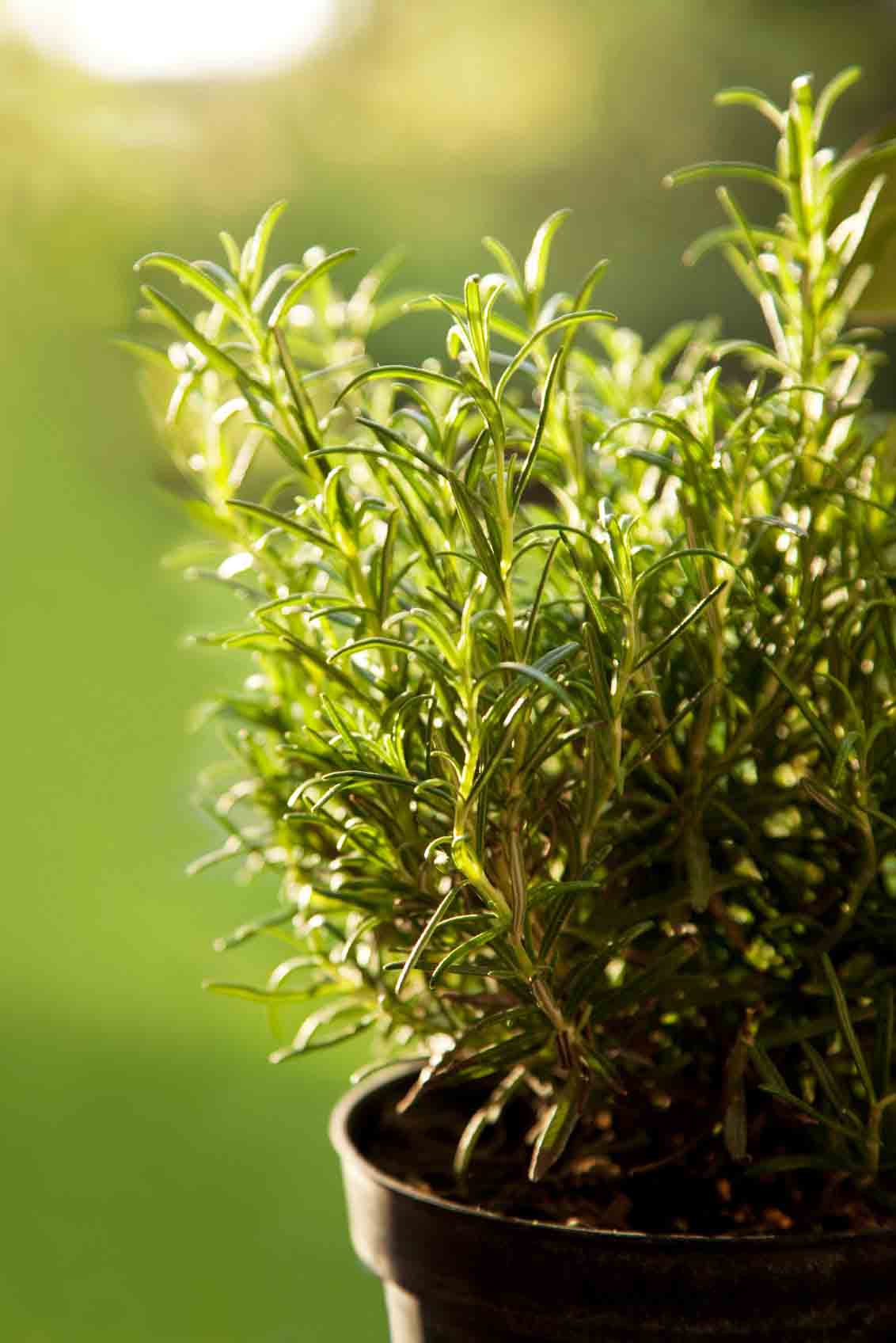 What is the reason for the yellowing of the leaves of rosemary plants? If they even fall off, one of the reasons may be the accumulation of water in the pot soil and too much watering. There is also a place where it is not ventilated and not exposed to the sun. Another reason may be that the leaves of propagating rosemary turn yellow due to the use of undeveloped fertilizer when fertilizing. This kind of phenomenon deserves the attention of gardeners, and try to take remedial measures as soon as possible.
What is the reason for the yellowing of the leaves of rosemary plants? If they even fall off, one of the reasons may be the accumulation of water in the pot soil and too much watering. There is also a place where it is not ventilated and not exposed to the sun. Another reason may be that the leaves of propagating rosemary turn yellow due to the use of undeveloped fertilizer when fertilizing. This kind of phenomenon deserves the attention of gardeners, and try to take remedial measures as soon as possible.
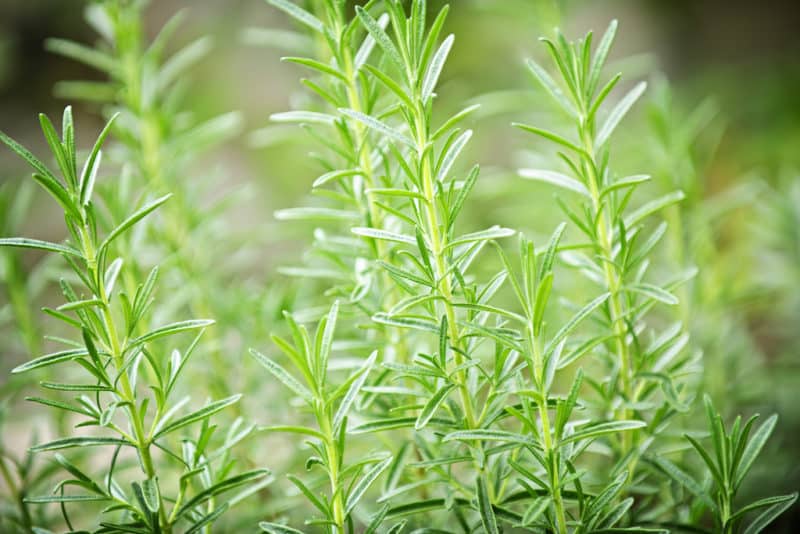 Rosemary plants need to apply enough fertilizer after flowering to promote their lasting flowering, but you'd better not use chemical fertilizers to avoid the death of osemary plants seedlings.
Rosemary plants need to apply enough fertilizer after flowering to promote their lasting flowering, but you'd better not use chemical fertilizers to avoid the death of osemary plants seedlings.
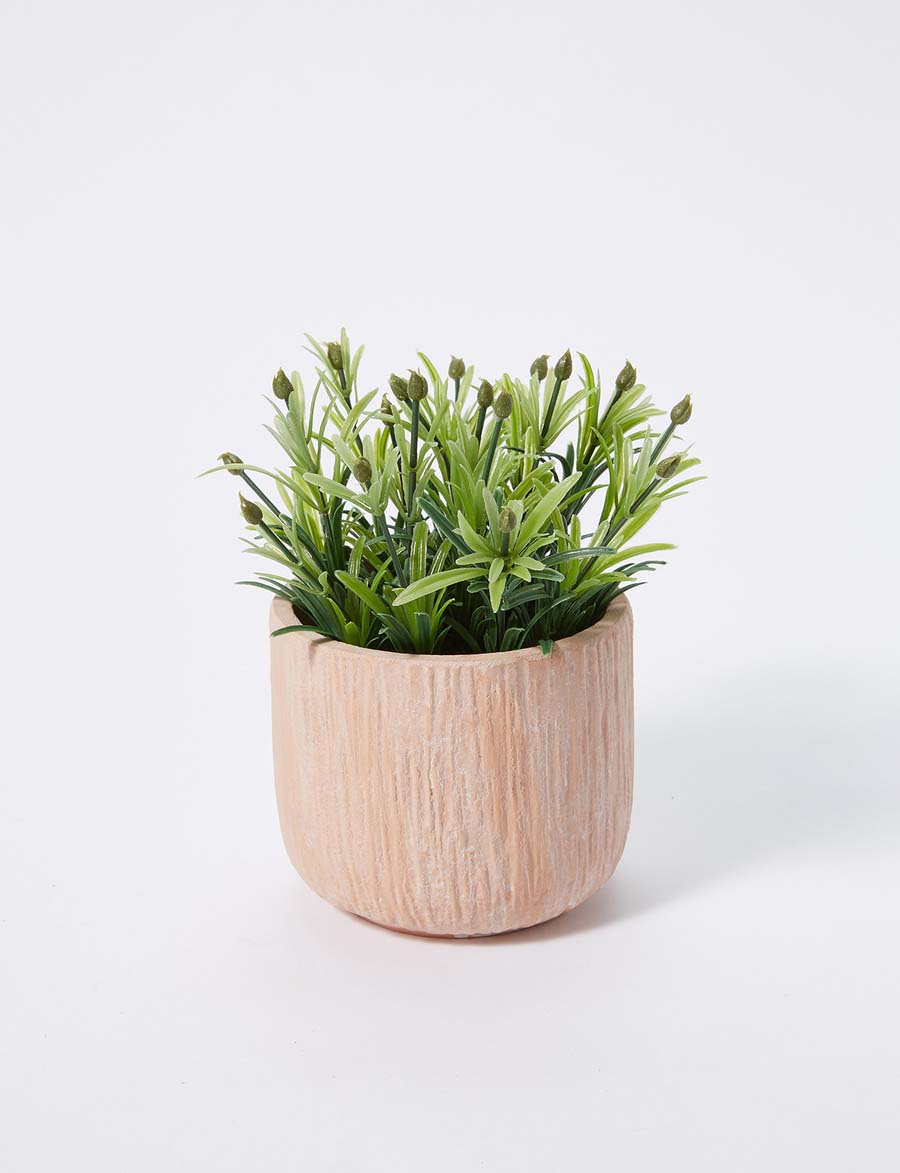 Whether it's meat, vegetables or soup, you can use rosemary plants. In addition, propagating rosemary can also be used in marinades to add fragrance to stewed soup, or to make fragrant seasoning cream. As for dessert drinks, you can add fresh rosemary to smoothies or yogurt, or use it in biscuits, cakes or candies. Rosemary is also very common in the seasoning used for processing. If steak is eaten, many restaurants will match some herb salt, and it is also said that the aroma of propagating rosemary matches the beef best.
Whether it's meat, vegetables or soup, you can use rosemary plants. In addition, propagating rosemary can also be used in marinades to add fragrance to stewed soup, or to make fragrant seasoning cream. As for dessert drinks, you can add fresh rosemary to smoothies or yogurt, or use it in biscuits, cakes or candies. Rosemary is also very common in the seasoning used for processing. If steak is eaten, many restaurants will match some herb salt, and it is also said that the aroma of propagating rosemary matches the beef best.
Propagating rosemary likes a warm and dry environment with plenty of sunlight, is resistant to cold, barrenness and drought, and is afraid of stagnant water. It should attract attention during the potting of growing rosemary.
Read Next:
Top 10 Most Beautiful Roses in the World
Top 10 Most Beautiful Flowers in the World
26 Best Autumn Flowers to Plant for Fall Color in Garden

Rosemary Flower PotRosemary Soil PreparationHow to Grow Rosemary in Pot1. Cuttings of rosemary plants2. Press branches of rosemary plantsRosemary Plants TransplantingRosemary Plants Watering in PotRosemary Yellow Leaf CareRosemary Plants Care Tips in PotDon't water of rosemary plants too muchDon't use fertilizerRosemary Plants PruningUse of Rosemary
Rosemary Flower Pot
The pot for growing rosemary plant does not need to be large, and it should be within 20 cm in diameter. Because if it is too large, it is not easy for gardeners to control the amount of watering. In addition, the early rosemary plant grew slowly, so it was not so big a pot. This article recommends using ordinary tile basins to grow rosemary, which is breathable and water-permeable, but also more practical.Rosemary Soil Preparation

How to Grow Rosemary in Pot
Gardeners should pay attention that it is best for you to cover seeding, pressing branches, etc., with a breeding form adapted to the rosemary plant. The ovules of rosemary plant do not sprout quickly and the sprout rate is low. Generally, they are only used when new varieties are introduced. The large-scale planting of common sense varieties is considered appropriate and asexual propagation is used. When small rosemary plants are produced, a good rosemary plant with a length of 30 cm to 40 cm can be directly used as the female parent, and the female parent can be pinched to promote the germination of a large number of lateral branches for the collection of cuttings. Both 5 cm shoots and 7 cm to 10 cm long unlignified shoots can be used as cuttings.1. Cuttings of rosemary plants

2. Press branches of rosemary plants
The substrate of growing rosemary can be considered suitable and use pearlite, peat soil, loess, coarse river sand, etc., or mixed substrates. To speed up rooting, you can use indole acetic acid or naphthalene acetic acid and other rooting enhancers. During the rooting period of Propagating rosemary, the suitable temperature in the greenhouse is 22℃. Gardeners need to spray the cuttings frequently, but too moist will cause erosion at the top of the cuttings, and the sprouting roots are not strong enough. In the first 10 to 14 days, the cuttings of of rosemary plants should take root, and gardeners should take care to avoid wilting cuttings.Rosemary Plants Transplanting

Rosemary Plants Watering in Pot

Rosemary Yellow Leaf Care

Rosemary Plants Care Tips in Pot
Don't water of rosemary plants too much
In fact, florists are watering according to their experience. Those who raise rosemary plants for the first time need to pay attention to the high temperature in summer. Although rosemary plants need more watering, they should not water too much. The plants of rosemary plants are easy to wilt and their growth slows down. In addition, perennial rosemary plants, improper watering can also cause this situation.Don't use fertilizer

Rosemary Plants Pruning
Rosemary plants can grow up to 1 to 2 meters tall if they are not trimmed. This herb is suitable for fences outside the house, but the whole rosemary plants will be slightly messy because of the branches. You can trim at the right time to maintain ventilation and make your posture better. The trimmed rosemary plants can be used for cooking or utensils, but you need to pay attention to trimming the top tender stems. It is not advisable to cut too long, nor cut to the lignified part. If you harvest of rosemary plants too frequently or cut it too short, it will cause the plant to no longer germinate and flower. Also what you should pay attention to is that the cut juice will become viscous. Gardeners try to wear gloves and long-sleeved clothes when harvesting to avoid skin allergies. You'd better wash your hands immediately after touching rosemary plants and avoid touching your eyes. Read More: Rosemary Plant CareUse of Rosemary

Propagating rosemary likes a warm and dry environment with plenty of sunlight, is resistant to cold, barrenness and drought, and is afraid of stagnant water. It should attract attention during the potting of growing rosemary.
Read Next:
Top 10 Most Beautiful Roses in the World
Top 10 Most Beautiful Flowers in the World
26 Best Autumn Flowers to Plant for Fall Color in Garden
Latest Updated
- Benefits of Bugleweed - 7 Science-backed Health Benefits
- Bugleweed Dangers & Side Effects - Is It Poisonous?
- How to Plant Evergreen Trees - What You Should Know
- When to Plant Evergreens - Grow Guide for Evergreen Trees
- 12 Wonderful Evergreen Shrubs for Your Garden
- 12 Popular Evergreen Plants with Pictures for Beginners
- When And How To Prune A Lilac Bush Like a Pro
- How to Grow & Care for Lilac Vine (Hardenbergia Violacea)
- Japanese Lilac Tree (Syringa Reticulata) Care & Propagation Guide
- Shumard Oak Pros and Cons - What to Know
Popular Articles
- Winter maintenance of Antirrhinum Majus
- How to Grow Terminalia Mantaly Tree
- How to Grow and Care for Crossostephium Chinense
- How to grow Antirrhinum Majus in spring
- Peristeria Elata (Dove Orchid) Profile: Info & Care Guide
- Underwatered Snake Plant (Sansevieria Trifasciata) - Signs And How To Fix
- How to Care for Brazilian Jasmine Plant (Mandevilla Sanderi)
- How to Grow & Care for Graptopetalum Purple Delight in Summer
- Rosa Chinensis (China Rose): Plant Growing & Care Tips
- How to Care for Baby Sun Rose (Aptenia Cordifolia)